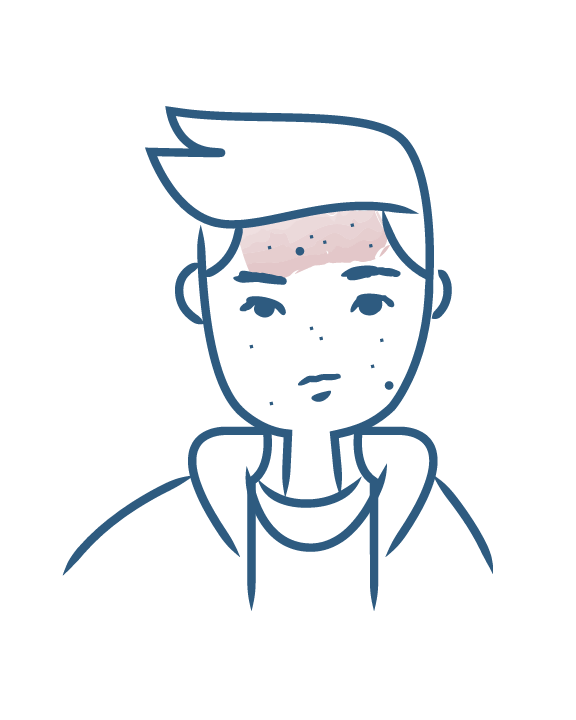What can you do about acne on a daily basis?

Acne and the sun
Every summer is the same: people suffering from acne ask themselves various questions about the sun and its impact on their skin. Let's take a closer look at acne and the sun so we can separate facts and common misconceptions.
The sun and acne, friends or foes?
At first sight, the sun appears to be a friend to acne-prone skin and a good way of fighting acne: the sun causes the skin to thicken and dry out, which has the benefit of reducing spots and shine due to excess sebum.
But don’t forget the rebound effect! When sun exposure decreases, the dead cells responsible for the thickening of the skin are eliminated, while sebum regains ground. As a result, spots reappear and new lesions form.
Beware of sun acne. This is a rather peculiar acne flare-up, triggered by sun exposure. And no, it doesn’t appear in November!
Finally, many anti-acne treatments are photosensitizing. Most anti-acne treatments continue during the summer, provided you have effective sun protection. We recommend you make an appointment with your doctor before the summer to review your current treatments and adapt them if necessary.
Acne and the sun are generally incompatible, requiring the use of appropriate sunscreen.
How should you protect myself against the sun and acne?
Sun protection is based on a set of common-sense measures: avoid sun exposure during the hottest hours of the day, wear a hat and sunglasses, and apply a sun cream with a factor adapted to the phototype and weather conditions every two hours and after each swim.
A sun cream adapted to acne must be non-comedogenic so as not to promote spots. Light textures such as fluids or emulsions are preferred. Other solutions exist for protection against the sun and acne: some sun products are tinted to combine sun protection and lesion camouflage.
More information
- Discover What soap should you use for acne?
What can you do about acne on a daily basis?
What soap should you use for acne?
- Discover Acne and sport
What can you do about acne on a daily basis?
Acne and sport
- Discover Masks to fight acne
What can you do about acne on a daily basis?
Masks to fight acne
- Discover Zinc to fight acne
What can you do about acne on a daily basis?
Zinc to fight acne
- Discover The pill as an acne treatment
What can you do about acne on a daily basis?
The pill as an acne treatment
- Discover Diet and acne
What can you do about acne on a daily basis?
Diet and acne
- Discover Peels for acne
What can you do about acne on a daily basis?
Peels for acne
Our care routines
Oily or acne-prone skin
- Discover Anti-blemish face care summer routine for adult skin
Anti-blemish face care summer routine for adult skin
Dermatological expertise
To better understand your skin and hair, discover our exclusive content and innovative care products designed to improve your quality of life..

